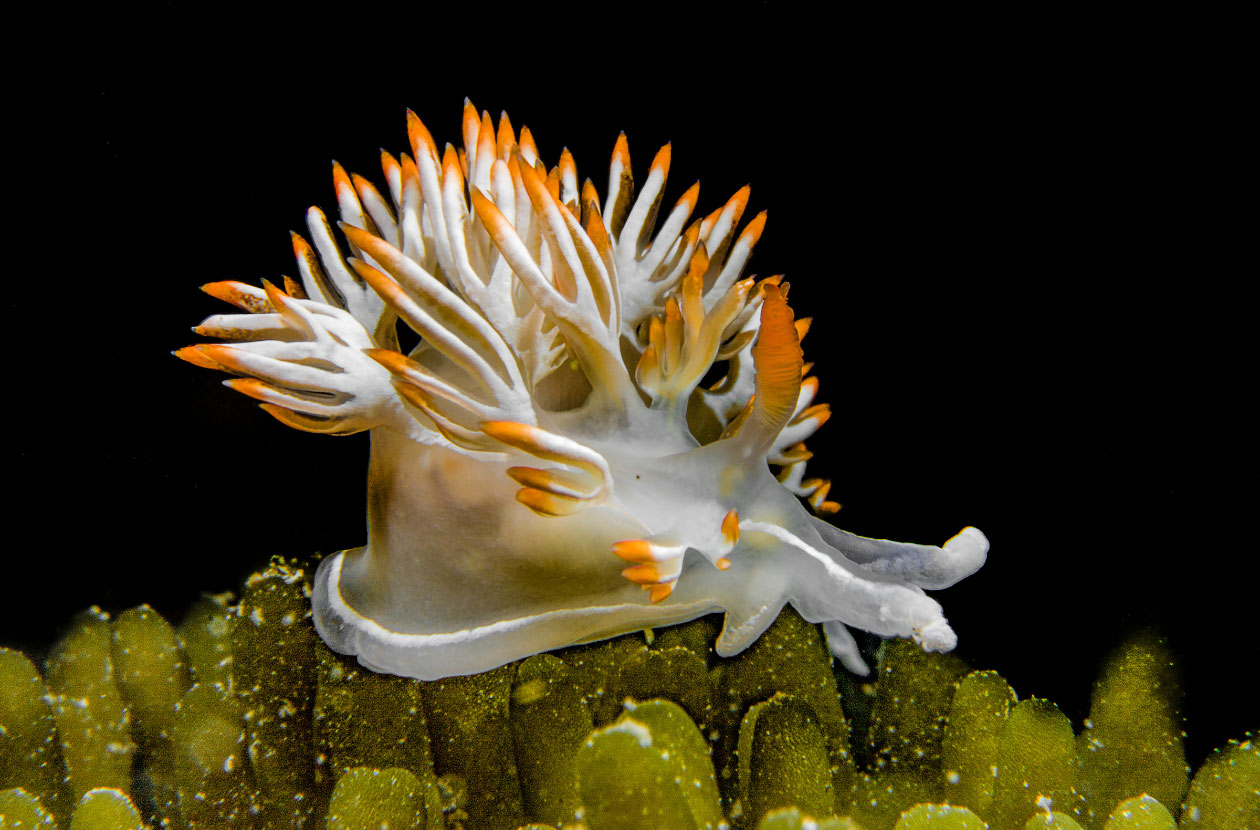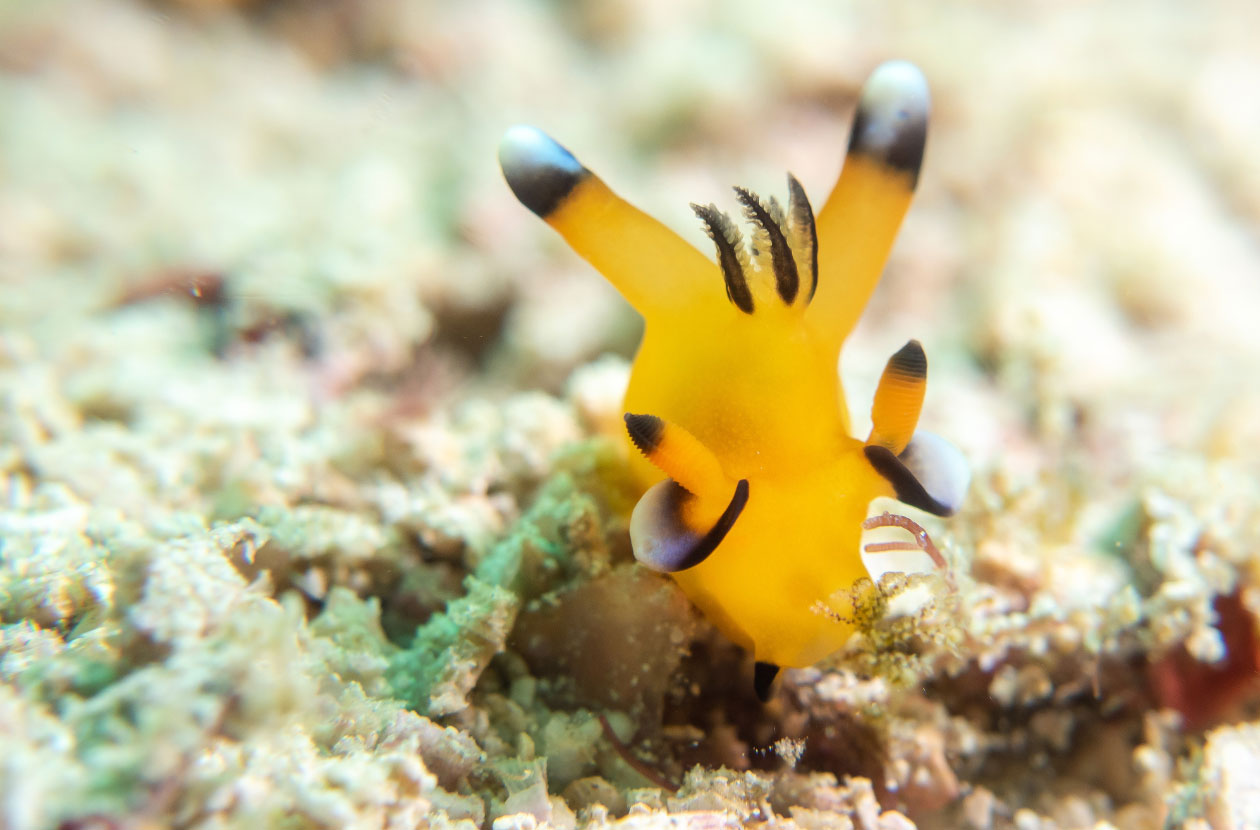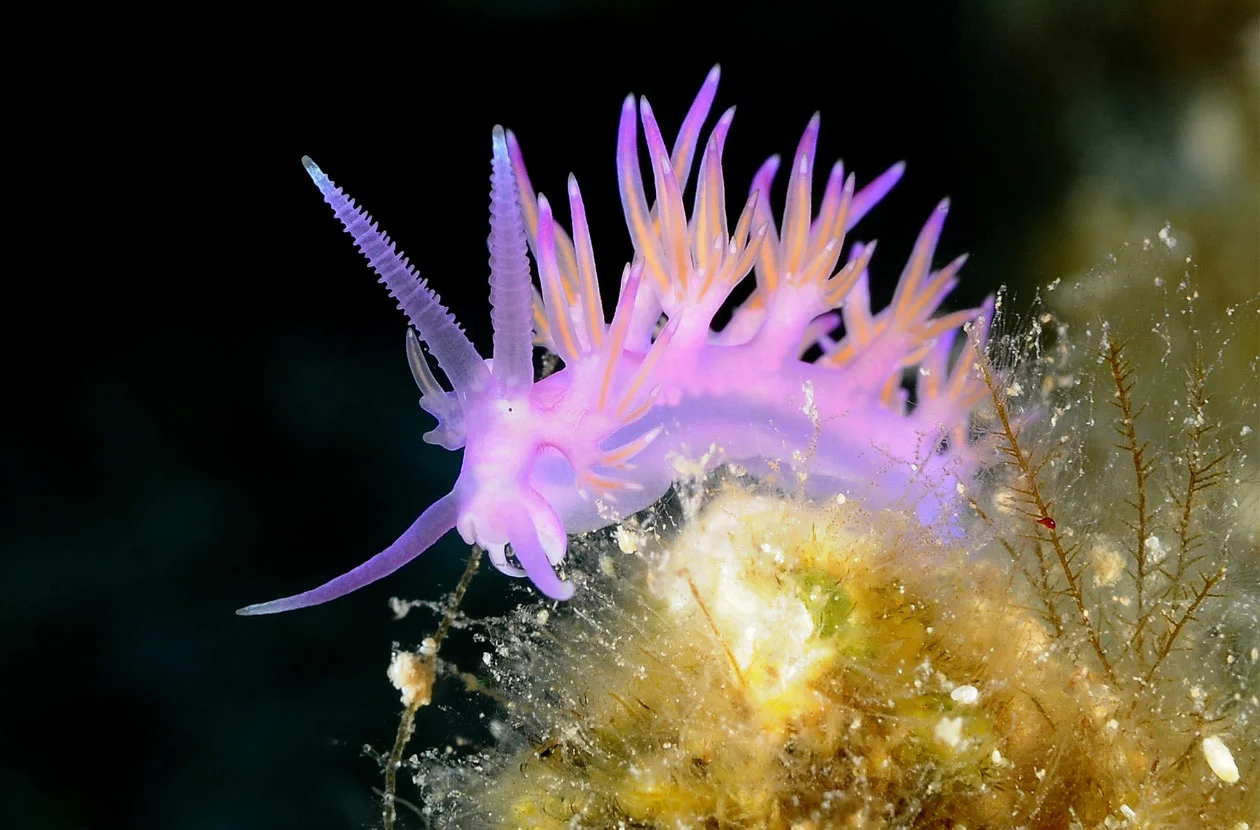Nudibranch, also known as sea slugs, are fascinating creatures that captivate marine enthusiasts around the world. These colorful and diverse animals have gained popularity due to their intricate shapes, vibrant hues, and unique behaviors. In this article, we will explore the captivating world of nudibranch and uncover some intriguing facts about these mesmerizing sea creatures.
Nudibranchs are soft-bodied marine gastropods that belong to the class Gastropoda and the subclass Opisthobranchia. They are found in oceans worldwide, from tropical reefs to cold water environments. These captivating creatures come in a vast array of shapes, sizes, and colors, making them a subject of great interest for divers, scientists, and underwater photographers.
What is Nudibranch?
Nudibranchs are a type of mollusk, but unlike their shelled relatives, they lack a protective shell. The name “nudibranch” comes from the Latin words “nudus” and “brankhia”, which mean “naked gills”. They earned this name due to their exposed gills, which resemble delicate, feathery structures located on their backs.
Diversity of Nudibranchs
Nudibranchs exhibit an incredible diversity of forms and species. With over 3,000 known species, they come in various shapes and sizes, ranging from a few millimeters to over 30 centimeters in length. Their body shapes can range from elongated and slender to short and stout, depending on the species.
Colors and Patterns
One of the most remarkable characteristics of nudibranchs is their vibrant colors and intricate patterns. Their appearance is a result of their diet, as many nudibranchs feed on colorful organisms such as sponges, anemones, and corals. Some species even have the ability to change their color patterns, providing camouflage or warning signals to potential predators.

Feeding Habits
Nudibranchs display a variety of feeding habits. Some species are herbivores, feeding on algae and seagrasses, while others are carnivorous, preying on small invertebrates such as hydroids and other nudibranchs. A few nudibranchs have developed a unique feeding strategy known as kleptoplasty, where they steal and incorporate the chloroplasts from their prey into their own tissues, enabling them to photosynthesize.
Defense Mechanisms
To protect themselves from predators, nudibranchs have evolved an array of defense mechanisms. Some species have toxic chemicals in their tissues, which they obtain from their diet. These chemicals make them unpalatable or even deadly to potential predators. Other nudibranchs use their bright colors as a warning signal, indicating their toxicity or inedibility.
Reproduction and Life Cycle
Nudibranchs exhibit diverse reproductive strategies. While some species are hermaphroditic, possessing both male and female reproductive organs, others have separate sexes. They can reproduce through both internal and external fertilization. After mating, the female lays her eggs, which can take various forms depending on the species, from delicate ribbons to gelatinous masses.
Habitat and Distribution
Nudibranchs are found in a wide range of marine habitats, including coral reefs, rocky shores, seagrass beds, and even the deep sea. They inhabit oceans worldwide, from tropical waters to polar regions. Each species has its preferred habitat and can be found at specific depths, which adds to the diversity and complexity of their distribution.

Importance in Marine Ecosystems
Nudibranchs play crucial roles in marine ecosystems. They contribute to the balance of their habitats by consuming organisms such as sponges and algae, preventing their overgrowth. Additionally, some species have symbiotic relationships with other organisms, providing shelter or camouflage. Their presence indicates a healthy and diverse ecosystem.
Nudibranch Conservation
Due to their fragile nature and dependence on specific habitats, nudibranchs are vulnerable to environmental changes and human activities. Habitat destruction, pollution, and overexploitation pose significant threats to their populations. Conservation efforts, including the establishment of marine protected areas and public awareness campaigns, are vital for their long-term survival.
Interactions with Humans
Nudibranchs have become popular subjects for divers and underwater photographers due to their vivid colors and unique shapes. Their enchanting appearance has captivated the hearts of many, inspiring underwater explorations and scientific studies. Furthermore, nudibranchs serve as indicators of environmental health, helping scientists monitor the state of marine ecosystems.
Nudibranch as Photography Subject
Underwater photographers are drawn to nudibranch for their photogenic qualities. The vibrant colors, intricate patterns, and interesting body shapes make them ideal subjects for macro photography. Capturing the beauty and details of these creatures requires patience, skill, and a keen eye for composition.
Nudibranch Facts You Want to Know
Are nudibranchs dangerous to humans?
No, nudibranchs are not dangerous to humans. While some nudibranchs possess toxic chemicals in their tissues, they are not harmful to humans unless ingested. It is important to note that nudibranchs are not aggressive creatures and do not pose a threat to human safety. These beautiful sea slugs are best admired and appreciated from a safe distance in their natural marine habitats.
Can nudibranch change it colors?
Yes, nudibranchs have the remarkable ability to change their colors. They can alter their pigmentation and patterns to blend in with their surroundings or to send warning signals to potential predators. This color change is controlled by specialized cells called chromatophores, which expand or contract to reveal different colors and patterns. The ability to change colors allows nudibranchs to camouflage themselves or display their toxicity, adding to their fascinating characteristics.
How do nudibranchs reproduce?
Nudibranchs have diverse reproductive strategies. Some species are hermaphroditic, meaning they possess both male and female reproductive organs. This allows them to mate with any other mature individual of their species they encounter. During mating, they exchange sperm, and each nudibranch can store the sperm for later use.
Other nudibranch species have separate sexes, with individuals being either male or female. They reproduce through external fertilization, where the male nudibranch releases sperm into the water, and the female nudibranch releases eggs. Fertilization occurs when the sperm and eggs meet in the water column.

Do nudibranchs have predators?
Yes, nudibranchs have predators in their marine habitats. Despite their bright colors and sometimes toxic defenses, they are still preyed upon by various marine organisms. Some of the common predators of nudibranchs include certain species of fish, crabs, sea stars, and other marine invertebrates.
Can nudibranchs be kept in aquariums?
Keeping nudibranchs in aquariums can be challenging and requires specialized knowledge and care. While it is possible to keep some nudibranch species in captivity, it is important to note that they have specific requirements that must be met for their health and well-being. Nudibranchs have specific dietary needs, often feeding on specific types of organisms such as sponges, hydroids, or other nudibranchs. Providing the appropriate food source can be challenging, and a lack of proper nutrition can lead to health issues or even the death of the nudibranch.
Nudibranch Fun Facts
1. Nudibranchs are hermaphrodites, possessing both male and female reproductive organs.
2. They can lay thousands of eggs at once, which hatch into larvae that drift in the ocean currents.
3. Nudibranchs have a lifespan ranging from a few weeks to several years, depending on the species.
4. Some nudibranchs have specialized structures called rhinophores, which detect chemicals and help them locate food and mates.
5. Nudibranchs are known for their slow movement, gently gliding across the ocean floor or swimming with rhythmic contractions of their bodies.
Nudibranch – let’s recap
Nudibranchs are captivating creatures that bring a splash of color and wonder to our oceans. Their diversity, vibrant colors, and intriguing behaviors make them a source of fascination for scientists, divers, and nature enthusiasts. By understanding and appreciating these unique animals, we can work towards their conservation and ensure their continued presence in our marine ecosystems.



